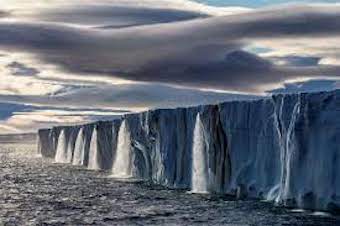If we continue to let the ice caps melt, rising sea levels may not be what threatens us most.
Photo: National Geographic nationalgeographic.com
We hear a lot about the effects of climate change on global sea levels. How much and how fast, what the impact on our coastal regions is likely to be, and so forth. Is the threat real? Yes, very much so. We should be concerned and act accordingly. But as is so often the case, the effects that most obviously come to mind don’t necessarily paint a complete picture.
Rising seas are the result of two primary factors – the melting of land ice, and thermal expansion. Ice sheets in Antarctica, Greenland and elsewhere are melting at an expanding rate, along with mountain glaciers and other land-based sources. (Sea ice is already floating in the ocean, so its melting contributes little to rising sea levels. It nonetheless presents a problem, as we’ll see below). About 60% of observed sea-level rise is due to all this new water introduced into the ocean system.
Water also expands as it gets warmer. That’s believed to be the other 40%.
This could get expensive – perhaps catastrophically so. To get some perspective of the scale, consider just one country for which we have reasonably good data – the United States. Counties in coastal areas immediately affected currently produce about half of that nation’s gross domestic product. Extrapolate that out to the rest of the world and, well, you get the idea. We’re talking about forced human migration on a massive scale, and a blow to the global economy which would be felt by every person on Earth.
Yet, despite all that, it’s still possible to imagine a future where humans have adapted. We’ve proven to be enormously resourceful when circumstances have called for it. Perhaps, at great cost to our wellbeing, we will have learned to cope with rising seas.
So let us give you a scenario – an all too plausible one – where it would be difficult indeed to imagine what options might be available to us to cope with it. This is perhaps the real threat that comes with the melting of our polar ice. The innocuous sounding concept underlining it is ‘salinity’.
The amount of dissolved salt in a body of water determines its salinity. This matters a great deal to the organisms that live in it, as they can only thrive in conditions they’ve adapted to over long periods of time. As well, salinity plays a crucial role in how oceans circulate nutrients, as well as other natural water cycles.
Salinity in seawater is driven by a number of factors that are largely affected by a warming climate, including evaporation and rainfall. But all things being equal, the one big variable affecting its change is the rate at which we are losing land-based ice. We can call it ‘deglaciation’, and its impact is huge.
The problem is that it takes immense amounts of energy to mix large masses of water with different properties. Imagine a layer of relatively fresh water from glacial runoff sitting on top of a layer of saline ocean water, then think of how consequential that would be to the organisms that have evolved to live in the latter. So now a mass melting of the ice caps will have slowed the exchange of salt, heat, waters of different densities and so on. We’d be largely dependent on tides and topography-driven sources (river flows for example) to try to restore the proper balance.
Ocean currents would be dramatically affected, possibly even shut down altogether. We rely on these to move water, both at the surface and at the ocean’s depths, and they are vital to the circulation of nutrients. Currents are an essential part of life cycles on which all ocean life depends.
And on which the entire biosphere depends. Including the food chains of which we ourselves are a part.
We cannot afford to allow for the creation of huge ‘dead zones’ in our oceans. There is no conceivable way we could adapt to that and still keep our planet habitable for humans.
The point here is not to be alarmist. We will continue to thrive well into the future to the extent that we come to appreciate that all things are interconnected. What matters is that we recognize that we need to take care of the whole, and not just react to the symptoms of what is taking place all around us. There is a lot more going on than what is initially observable. The unexpectedly dramatic impact of deglaciation and desalination on global food chains is just one of many, many examples.
Fortunately, we have to ability to choose where we place our attention, and to which ends we will apply our innovativeness and creativity. We can choose to focus on how we react to the consequences of our actions. Or we can focus on the overall long-term health of mother-Earth as a whole.
For The Orca’s Voice,
Your Canadian Cetacean Alliance Team



Leave a Reply